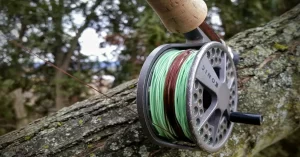The Mono Rig technique for fly fishing has gained significant attention, challenging conventional methods for presenting nymphs and streamers to trout. This setup uses a lengthy monofilament leader—often with butt sections of 20 feet or more—as an alternative to traditional fly lines. By relying on a lightweight yet sturdy monofilament section, anglers can more directly connect with their flies and achieve smoother underwater presentations, especially on smaller casts where fly lines remain on the reel.
The essence of the Mono Rig is its ability to provide greater control over the line and reduce drag, making it ideal for upstream nymphing or distance streamer fishing. Fly lines, by contrast, are heavier, sagging off the rod tip and creating drag that disrupts the natural drift of nymphs. In a Mono Rig setup, the lighter monofilament leader can be held above the water, reducing line sag and enabling longer, uninterrupted drifts. This difference makes a Mono Rig a versatile tool for tight line nymphing, indicator nymphing, and even dry-dropper setups.

The debate surrounding the Mono Rig often centers on whether it resembles spin fishing or if it merely adapts principles from Euro nymphing. Yet, practitioners assert that it remains distinct, maintaining the essence of fly fishing by casting monofilament with enough weight to propel flies accurately while retaining finesse. This method also allows for unique adjustments, such as using an index finger on top of the rod to eliminate wrist movement and increase control, an approach shared by seasoned anglers like Loren Williams.
For those interested, fine-tuning the Mono Rig involves experimenting with various materials and lengths, such as the Maxima Chameleon for the leader, to tailor casting and presentation. While not suitable for beginners, this method offers experienced anglers a more refined and responsive approach to nymphing and streamer fishing, maximizing contact and control with each cast.
Image/Source: troutbitten





